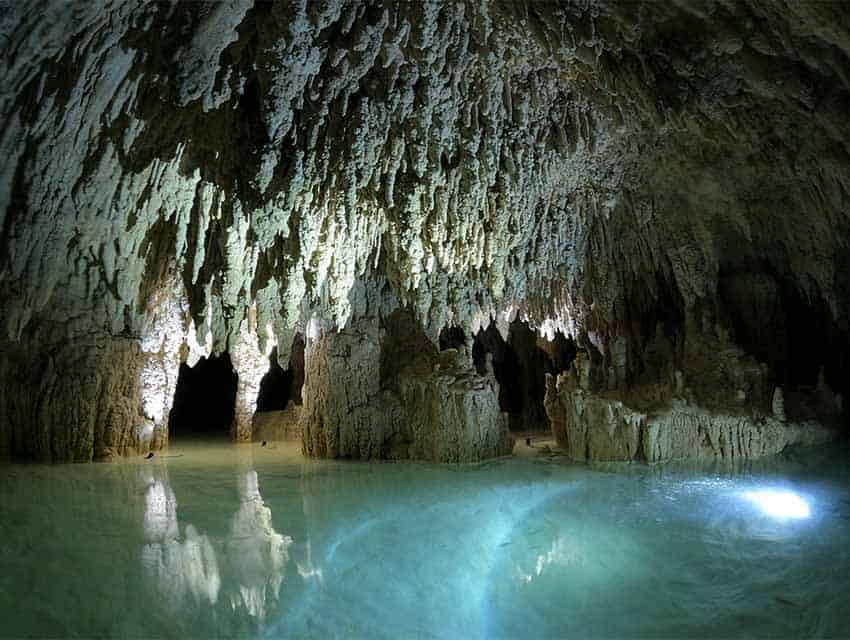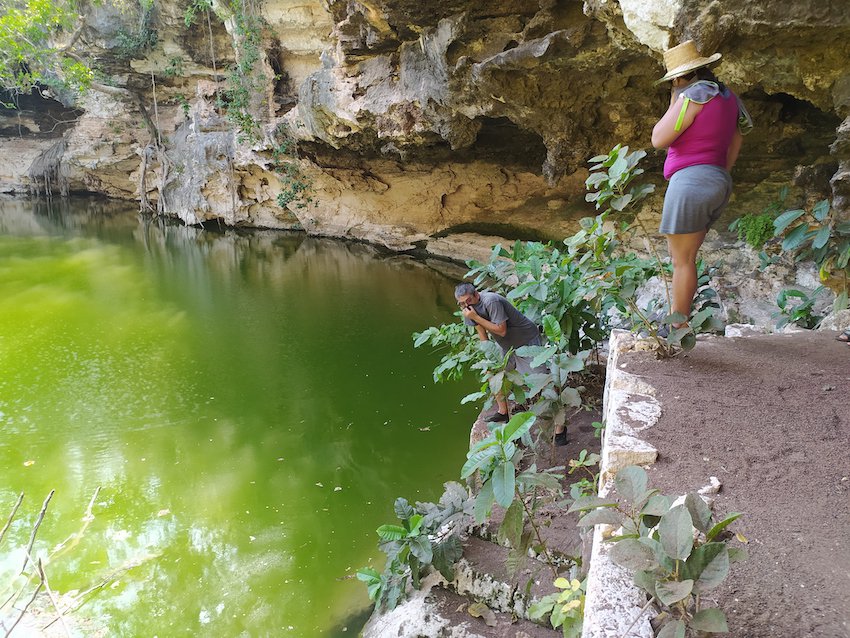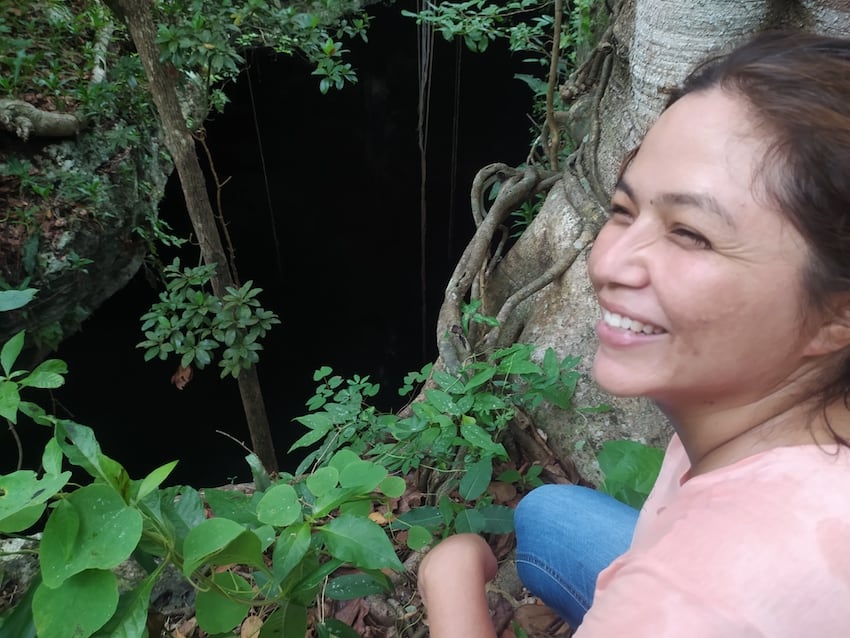unique biospheres under threat in the Yucatán

Say the word “cenote” and images of pristine, sparkling waters usually come to mind. But in Yucatán, around 70% of the state’s cenotes — sinkholes which are sources of drinking water for more than 2 million people — are contaminated with human waste and waste from industrial pig farms, according to the NGO The Grosjean Expedition.
Some nongovernmental agencies also have raised concerns that these unique aquatic biospheres are used as unofficial industrial dumping grounds. The cenotes in Yucatán are connected in an extensive network of natural sinkholes that emerge through the collapse of limestone bedrock, revealing hidden groundwater pools. They are said to be the result of the collision of the same asteroid that killed the dinosaurs and were sacred entrances to the underworld for the ancient Maya.
Today, however, they are more widely known internationally as breathtaking swim spots for locals and tourists that give a much-needed economic boost to rural communities.
Sergio Grosjean Abimerhi, Director of the Grosjean Expedition responsible for cenote cleanup operations, raised the issue in February on the dire state of Mexico’s natural wonders. The sub-aquatic archaeologist said that most of the more than 3,000 cenotes registered in Yucatán have ‘problematic’ levels of untreated sewage and traces of feces.
“There is no need to be alarmed, but we must be careful because of the increase of residents in the state who set up new businesses and industries,” he said. “There is more deforestation and there are no longer such diverse species of plants but rather stains of cement. All this accumulates and contaminates the cenotes.”
In July, the Secretariat for Sustainable Development (SDS) stated that 11 cenotes in seven municipalities had been cleared of 891 kilograms of trash this year. Hundreds of volunteers collaborated for the annual cleanup that removed around 4 tons of garbage in 2022 and more than 5 tons the previous year.

But María Gabriela González Cruz, 37, a biologist and professor at the Universities for Well-Being Benito Juárez in Yaxcabá, Yucatán, believes rural communities should not be chastised. She says blame for the damage done to cenotes falls mostly on the major pig ranches in the jungle that spill unfiltered waste into the water.
“The biggest threat comes from unseen waste dumped by these major industries that destabilize the fragile underwater ecosystem,” she said. “Nobody wants to talk about it, but as soon as you do, you open a can of worms on the potential ecodisaster ahead.”
When it comes to the trash produced by villagers, Cruz believes it comes from a lack of understanding rather than genuine negligence. There’s little difference for some people in the region between throwing an organic banana skin to the ground or a harmful inorganic plastic bottle.
“We are working on spreading this awareness to the community from the university and other schools,” she said. “Many of my students knew contamination had increased but were unsure how to deal with it. Now that they better understand the harmful effects of plastic pollution, they are keen to spread the word and help restore their natural environment.”

The main water source for villages like Yaxcabá comes from neighboring cenotes and is treated with excessively high levels of chlorine due to dangerous levels of contamination.
A few years ago, the village cenote Ts’ono’ot was sanitized by government officials, and some two tonnes were hauled from its depths. They discovered numerous rusty bicycles, TV sets and all sorts of plastic trash, from soda bottles to chip packets and candy wrappers. They even found part of a toilet.
“Nobody knows just how contaminated the water is, but at a certain time of the year, much of the population falls ill with problems linked to drinking dirty water,” she said. “I feel as though the scientists and doctors I have spoken to have their hands tied because of bureaucratic figures who are indifferent to the problem.”
Cruz also laments that once plentiful endemic species of fish, crustaceans and birds evolving in cenote ecosystems have now completely vanished due to excessive pollution.
“Everyone loses with the loss of our cenotes, whether it be the ecosystem, locals or tourists. Contaminated cenotes are a sad conclusion for a prehistoric wonder,” she said. “I feel that with the correct investment, we could find a happy arrangement that can satisfy all who benefit from cenotes.”
According to Jaqueline Torres Zepeda, 37, another biologist working in the region, there is still a long way to go regarding research into the resilience of cenotes and in spreading awareness.

“It is distressing to see such an indifferent attitude from the authorities when it comes to conservation of these natural world wonders,” she said. “Cenotes are unique ecosystems of exceptional beauty with profound ancient history attached to them. We do not know how fragile or resilient they are in terms of pollution and what effect climate change has on them.”
After three years in Yaxcabá, Zepeda understood that practically every remote place she visited in Yucatán had a village cenote at its center. It reinforced her concept that these communities still rely heavily on these bodies of water because of the lack of drinking water treatment facilities.
“It is possible to find cenotes under many of the old churches, which demonstrates the dependence on them during colonial times to sustain expansion,” she said. “Water levels in cenotes have dropped drastically over the last decades due to climate change, which — combined with industrial and human pollution — has caused many of them to become putrid.”

Zepeda said the evidence of this ecodisaster comes from people who have lived here their entire lives and are witnessing this unfortunate development.
“I have the impression that villagers speak about cenotes as a fond memory. They realize that they were sacred to their ancestors and maintain a profound respect for them. Some people still ask for permission to guardian spirits before entering a cenote. Although the true ancestral meaning may no longer exist, the Maya today continue to recognize their spiritual significance.”
Zepeda is adamant that the focus for authorities regarding cenotes must revolve around conservation, including monitoring and management of the interconnected water system. This information should be provided as feedback on the care of cenote heritage to surrounding communities.
“Yucatán is a paradise for biologists, with its lush jungles filled with countless endemic species,” she said. “But all of this beauty is sustained by the freshwater provided by cenotes.
“If their purity continues to be tainted, I’m afraid of the unfathomable consequences this could have on the local population and surrounding wildlife.”
Mark Viales writes for Mexico News Daily
Source: Mexico News Daily

